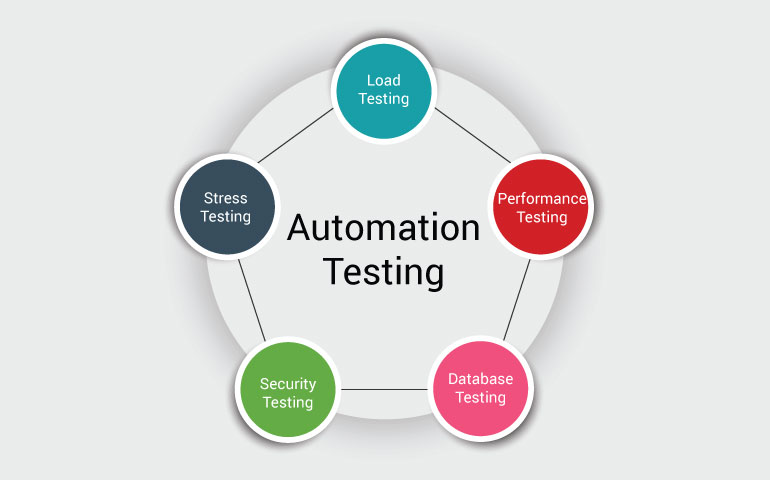The Significance of Automation Testing in Agile Development Environments
The Significance of Automation Testing in Agile Development Environments
Blog Article
From Manual to Automated Testing: A Comprehensive Guide to Transitioning Efficiently and Effectively
In the realm of software screening, the change from guidebook to automated procedures has ended up being a progressively important transition for organizations looking for to boost performance and precision in their testing practices. As technology remains to breakthrough, the requirement for effective and smooth automatic testing methods has actually never ever been much more pressing. The trip from guidebook to automated testing is not without its difficulties, but when come close to tactically and with a clear strategy in mind, the advantages can be substantial - automation testing. In this extensive guide, we will explore crucial steps and considerations important for an effective change, from the first selection of tools to the integration of automation right into existing workflows. Stay tuned to reveal the insights that will help pave the method for a smoother and a lot more efficient testing process.
Benefits of Automated Checking
Automated testing offers countless advantages, improving performance and precision in software application advancement processes. One primary advantage is the significant reduction in screening time. Automated examinations can be run at the same time on several tools and running systems, considerably quickening the screening phase compared to hand-operated screening. This boosted performance enables faster responses on the high quality of the software application, making it possible for developers to determine and deal with concerns without delay.
Moreover, automated screening ensures a higher level of accuracy in spotting defects. Considering that automated examinations follow predefined scripts, human mistake is lessened, leading to more dependable examination outcomes. Consistency in screening is additionally boosted, as automated tests carry out the very same steps precisely each time they are run. This uniformity is critical in ensuring that all functionalities of the software application are completely examined, reducing the likelihood of undetected bugs slipping through to production.
Picking the Right Devices

To start with, assess your demands and purposes. Recognize the range of your project, the modern technologies involved, and the ability of your group. This evaluation will aid you identify the functions and capabilities you require in your testing tools.
Secondly, take into consideration the compatibility of the devices with your existing systems and procedures. Smooth assimilation with your current software growth lifecycle is essential to ensure a smooth change to automation.
Furthermore, assess the scalability and versatility of the devices. As your testing requires advance, the tools ought to be able to adapt and suit adjustments effectively.
Finally, factor in the support and community around the devices. When implementing automated testing, durable support and an energetic customer area can provide beneficial resources and assistance. By meticulously thinking about these facets, you can choose the right devices that straighten with your demands and set the stage for a successful change to automated testing.
Writing Reliable Examination Scripts

When crafting examination manuscripts, it is important to consider the particular requirements of the software program being checked and make sure that the manuscripts attend to all essential site capabilities. Descriptive and clear naming conventions for examination scripts and examination cases can enhance readability and maintainability. Additionally, including mistake handling devices within the examination scripts can aid in identifying and resolving concerns promptly.
Additionally, arranging examination manuscripts into modular parts can enhance reusability and scalability, reducing redundancy and improving performance in examination script maintenance. Routine testimonials and updates to check manuscripts are crucial to equal evolving software demands and functionalities. By adhering to these principles, testers can create reliable and durable examination manuscripts that contribute significantly to the success of automated screening procedures.
Integrating Automation Into Workflows
By flawlessly incorporating automated testing devices like Selenium or Appium into the software growth lifecycle, teams can accomplish faster comments on code changes, leading to quicker pest detection and resolution. This integration allows for continuous screening throughout the development process, making sure that any concerns are identified early on, resulting in click for info greater software program quality. Proper assimilation of automation devices calls for partnership between development, testing, and procedures teams to establish a unified process that maximizes efficiency and efficiency in providing top quality software program products.
Ensuring a Smooth Change
Successfully transitioning to automated screening entails meticulous preparation and mindful implementation to decrease disruptions and take full advantage of effectiveness in the software development process - automation testing. To ensure a smooth shift, it is important to start by performing a thorough analysis of the present screening procedures and recognizing locations where automation can bring the most significant benefits. Involving with all stakeholders early at the same time, consisting of programmers, testers, and task supervisors, is vital for garnering assistance and buy-in for the automation initiative
Communication is key during this shift stage. Clear interaction of the goals, benefits, and expectations of automated screening assists to take care of any type of resistance or worries that may emerge. Additionally, supplying sufficient training and sources for employee to upskill in automation devices and methods is vital for making sure an effective change.

Conclusion
In conclusion, transitioning from manual to automated testing provides many benefits, consisting of enhanced effectiveness and integrity. By choosing the appropriate devices, composing effective test manuscripts, and incorporating automation effortlessly right into process, organizations can make certain a successful and smooth transition. It is necessary to accept automation as an important asset in software program testing procedures to improve total quality and efficiency.
In the world of software application screening, the shift from guidebook to automated procedures has actually ended up being a progressively crucial shift for companies looking for to improve effectiveness and accuracy in their screening methods. Automated examinations can be run concurrently on multiple tools and running systems, dramatically speeding up the testing phase contrasted to hand-operated testing. Uniformity in screening is also boosted, as automated tests carry out the very same steps exactly each time they are run.To make certain the effective implementation of chosen testing tools, the development of reliable test scripts plays a vital function in validating the performance and efficiency of automated procedures - automation testing. By adhering to these concepts, testers can develop robust and reliable test scripts that contribute significantly to the success of automated screening procedures
Report this page